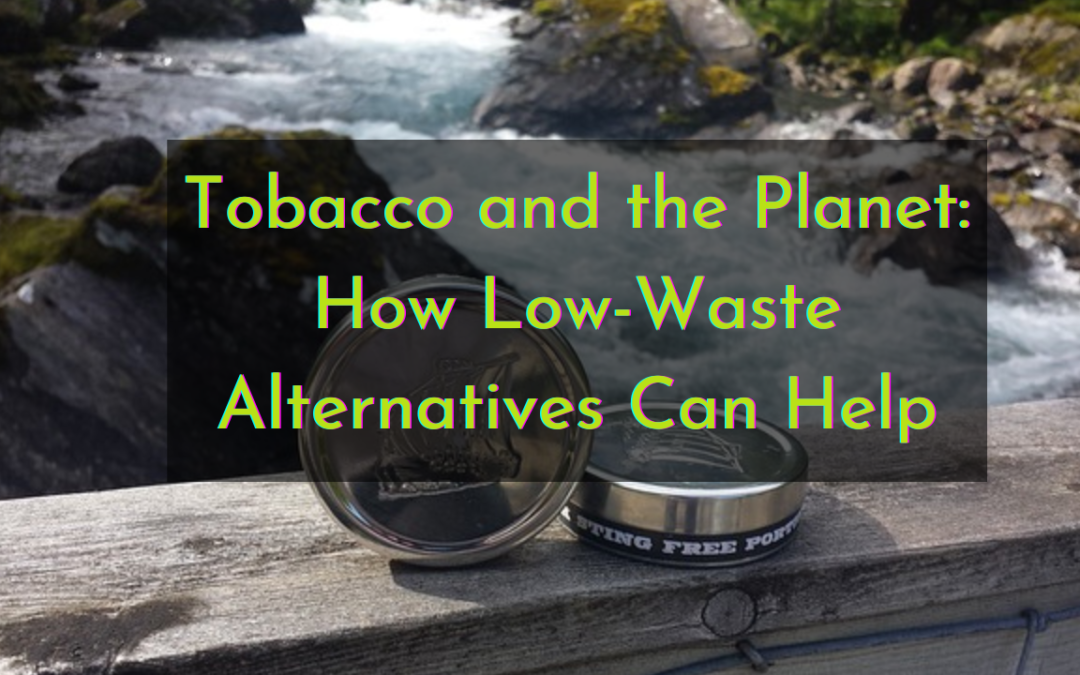The detrimental effects of cigarettes and tobacco consumption on our health are often discussed, but the tobacco industry is also significantly harmful to the environment, a fact frequently overlooked.
Today, tobacco is grown in over 124 countries, taking up 3.2 million hectares of fertile land that could be used to produce sustainable crops. This year, the UN’s World No Tobacco Day slogan is aptly named “Grow food, not tobacco” to encourage governments to end tobacco-growing subsidies and support farmers instead. To meet the demand for land needed for tobacco cultivation, 200,000 hectares of forests are destroyed each year. A tree is chopped down for every 15 boxes of cigarettes sold.
We’ve previously written about climate change as a global crisis and ways to address it. One such method, as mentioned in The Intergovernmental Panel on Climate Change’s report, is by limiting temperature rise to 1.5°C to prevent catastrophic health impacts. This goal has become increasingly urgent, with many industries contributing to rising greenhouse gas emissions. How does this relate to the production of cigarettes, you may ask? The tobacco industry alone emits 80 million tonnes of carbon dioxide equivalent annually. In this post, we’ll look at low-waste alternatives that can help alleviate the problem:
Nicotine pouches
When we think about the tobacco industry, the first line of products that comes to mind is cigarettes. Fortunately, many tobacco-free products are available today as safer and cleaner alternatives. These include nicotine replacement products often used for smoking cessation — such as nicotine pouches. Canned ZYN Spearmint pouches provide users with microdoses of nicotine to help gradually reduce nicotine intake. They are tobacco-free, smokeless, spitless, and sold in cans, which helps with the disposal of the pouches after use. ZYN cans also have a “catch lid” where you can place used pouches for disposal later. Of course, these lids should be cleaned regularly. Otherwise, users can also store old nicotine pouch cans for separate disposal. For smokers, nicotine pouches can help them quit by providing menthol flavors that are familiar to smokers, such as spearmint, without exposing them to tobacco.

Nicotine lozenges
Other nicotine replacement products can also help reduce tobacco consumption — and subsequently, the contribution to tobacco growth and production — as they are consumed orally. For example, FDA-approved lozenges from Perrigo are nicotine-coated mint lozenges available in 2mg and 4mg over-the-counter options. Today, nicotine lozenges are FDA-approved to help people quit smoking. Unlike nicotine pouches, the lozenge is placed between the gum and cheek and dissolves gradually over 20 to 30 minutes. Because nicotine lozenges don’t have to be taken out and disposed of after use, they make an excellent low-waste alternative to help reduce the environmental harms caused by the tobacco industry. Still, users should be wary of disposing of the product’s packaging properly and responsibly and not resort to littering.
Nicotine gums
Finally, nicotine gums are another orally-taken nicotine replacement product that has been popular for decades: nicotine gum. However, unlike nicotine lozenges, chewing gum can’t be swallowed, and the proper disposal of gums has been a long-standing issue among governments and environmentalists. While the global functional chewing gum market continues to grow, experts fear the lack of efficient disposal techniques may hinder products like nicotine gums from being a preferred option for smokers. To help solve this problem, UK-based recycling company Gumdrop collaborates with manufacturers and companies worldwide to make products from recycled and processed chewing gum. The recycled chewing gum can be turned into polymers, which is predicted to be a game-changer.
Aside from campaigns against the dangers of cigarette smoking for human health, its environmental effects should also be considered. The cigarette and tobacco industries can pivot to products that produce less waste and litter. Consumers can push the market forward by switching to these reduced-risk products instead, moving forward.



